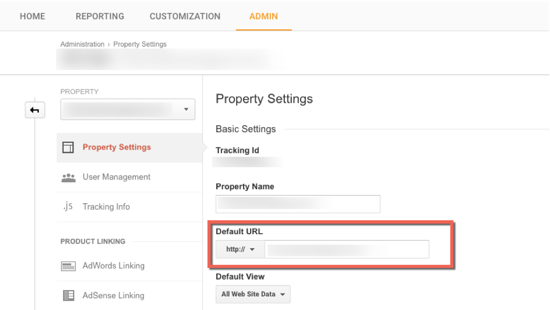SEO considerations when redesigning a website
So you’ve decided to do a website redesign to give it a more modern look and to provide a better experience to your visitors. That’s awesome – Google loves great experiences and rewards sites that put in the effort. But did you also put together a search engine optimisation (SEO) transition plan to minimise the risks of rankings and traffic loss?
Whatever your reasons, if you’re thinking about a rebranding or a site redesign, SEO should be a top concern if you want to avoid losing your existing rankings, traffic, and loyal customers in the process.
Luckily, this doesn’t have to happen if you have an SEO plan in place that enables you to make the transition the correct way. Here are the key things to keep in mind when undertaking website redesign, with SEO sustainability in mind.
1. Evaluate the current status of your website before you get started
Having a search engine friendly website means designing it with no barriers to search engines. So prior to a redesign you should consider reviewing your current site to assess the state it is in.
This allows you to examine the current status of your site so you can quickly identify the strengths, weaknesses, risks, and opportunities. You can also figure out what should be migrated, and what can be left behind. You can find problems that need to be addressed, and risks that can potentially get you penalised down the line.
Here’s how to go about reviewing your site:
Create a list of all the pages on your current website so you know exactly what you have on there.
Try to determine what needs to be fixed, what can be improved and what mistakes should not be repeated. For example, this is the time to check and see whether you have pages with missing titles and descriptions, or poorly performing content that needs to be rewritten and properly optimised.
Decide which pages you want to keep and which ones you need to consolidate. See which pages are doing well and make sure you don’t sabotage your efforts so far by changing those pages’ optimisation too much. Use Google Analytics to take a closer look at your top content and landing pages to gain a solid understanding of which pages are visited most. These are pages that you absolutely don’t want to remove or rework entirely so as to not lose existing rankings.
For the pages you want to consolidate, you’ll need to set up a 301 redirect from the original URL to the updated one. This ensures that your visitors always reach the intended page, even when the URL has changes.
So, review your current site in detail and get as much data about it as you can so you can then compare it against the performance of your redesigned website.
2. Maintain the URL structure as much as possible
Ideally you should keep the same URL structure as your original website when redesigning your site. It will make your life so much easier as you won’t need to worry about 301 (Moved Permanently) redirects.
However, if URLs must change, you absolutely need to inform the search engines where your old URLs have moved to. Skip this step and your rankings can drop and so will organic search traffic, sales, and revenue. Not good!
So make sure to have a 301 redirection plan in place to ensure visitors are sent to a relevant page, and search engines know that the page has permanently moved and where. In addition, a 301 redirect will also safely pass rankings from the old to the new page.
Now, if you’re switching to a new domain, you will need to do a 301 redirect for every page on your site meaning that each page on the old site should be redirected to the new URL on the new domain. This guide will tell you how to do a redirect on any platform. You can also use these two automatic redirect generators: htaccessredirect.net and rapidtables.com/web/tools/redirect-generator.htm.
You can also use a 301 checker to ensure that everything has been transferred properly.
3. Don’t forget keywords
Redesigning a site doesn’t mean removing all the previous keyword optimisation work you’ve done to your current site on the title tags, header tags, content and meta descriptions. If your current site is properly optimised, don’t throw away all that hard work.
Sure, a website redesign usually involves a copy refresh as well, to help align the content with the new design. What you need to do is analyse your current pages and understand what the important keywords and keyword phrases are for your website in the redesign process. You need to have a clear keyword mapping strategy in place so you know which pages you want to rank for which keywords.
But here’s the thing. It’s not so much about keywords as it is about topics and making each page relevant to a targeted topic. Every page on your site needs to cover a specific topic and to have a clear purpose. This means that instead of focusing on just one search term you should try to target a set of related keywords in your copy.
For example, if you’re a personal trainer, don’t just focus on the keyword “personal trainer”. Try to expand on that by using related search terms like certified fitness instructor, physical trainer in London, one-on-one fitness coach, personal workout training programs, etc. If you also provide meal plans, you should cover this on a separate page. Since this is a different topic, your set of keywords should be different as well.
Most importantly, align your content to Google’s new quality guidelines. This means no keyword stuffing or loading your pages with irrelevant search terms in the hopes of rankings higher. Deceiving your visitors won’t ever help you to build trust and convert visitors into customers, and you also risk getting penalised by Google.
4. Link between your pages
Internal links are vital to helping search engines understand which are the most important pages on your site, and the relationship between your web pages.
If you change your URLs, make sure you don’t forget about linking between your pages. Here’s why this is important: when a page isn’t linked to from any other page, that’s called an “island page”. While this type of page can still rank organically, your visitors won’t be able to find them through the navigation on your site. So make sure to link between your pages so every page on your site can be found through another page.
5. Focus on user experience and mobile friendliness
If your top priority is to provide users with a great user experience (UX), and a site that not only looks good but is also easy to use, your visitors won’t be the only ones who’ll love you. Google will too.
So when redesigning your site make sure you create one that responds to the needs of your users. This means it needs to be: accessible from any device, intuitive and inviting. There’s no point in reworking your site if the end result is an unattractive, difficult to navigate site that no one wants to spend more than three seconds on. Read our posts on UX and SEO success and the top ranking factors for SEO in 2016 and beyond to learn more about what UX entails and what else you can do to improve your visitors’ experience on your site.
Another thing to consider is getting a mobile-friendly site that people can access with ease from their smartphones. With mobile-friendliness now a significant ranking factor in Google’s mobile index, this is something you can’t afford to ignore. For more tips and advice, read our handy guide on on how to make your website mobile-friendly, plus best practices and common mistakes to avoid when designing for mobile.
6. Create new sitemaps
Since you’ve made changes to your site’s structure and URLs, you also need to let search engines know. You can do that by creating a new sitemap, which is like a roadmap for search engines. It will tell them exactly what’s on your site and where everything is located.
You can use a tool like the XML Sitemap Creator to have a sitemap automatically created for you. Then you’ll need to submit it to Google Search Console so they can crawl and index your new site.
Now, if you used a dev site that was noindexed, make sure the noindex tag is removed before launching your new site. The last thing you want to do is to accidentally deindex your site! A noindex tag will prevent your site from being included in the results page, which means none of your pages will show up.
If you’re not familiar with Google Search Console, we’ve got you covered with a beginner’s guide that explains how to set it up and walks you through the various features. In it you’ll also learn more about how to create a sitemap and how to ensure that Google is able to properly crawl and index your new site.
7. Don’t remove or change your Google Analytics code!
Keep the same Google Analytics code on your new website so you can compare data when launching. Instead of creating a new Google Analytics profile, simply update the address when you launch, by going to Admin > Property settings:
If you’ve not used Google Analytics for your current site, now’s the time to add it to your new site so you can track everything from how many visitors your site receives every day and which devices they’re using to access your site to which social media sites are sending you the most traffic and which are the most popular pages on your site.
Check out our beginner’s guide to Google Analytics to learn how to set it up and what other valuable information you can get from it.
8. From under construction to live
Don’t take down your site while “under construction” and then relaunch – you’ll lose any value you’ve gained thus far. Instead, it’s best to keep your old site live while you’re working on your new one. So when you’re ready to launch your new site, just make the switch with no downtime whatsoever.
Wrapping up
These are a few of the things you may face as you gear up for your website redesign. If you’re just getting started, make sure to make SEO a top priority and to consider the above at the beginning of the process, rather than waiting until your new site is complete.
Got any other tips? We’d love to read them so tweet us @123reg.




